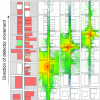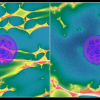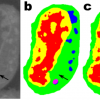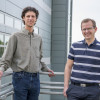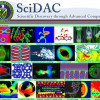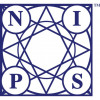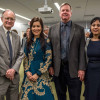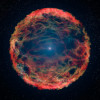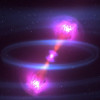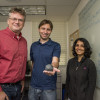News Center
Helen Cademartori Named CS Deputy for Operations
Helen Cademartori, is joining the Computing Sciences Area as Deputy for Operations and Operations Deputy for the CRD. In her new role, Cademartori will manage the CS Directorate's Business, Administration, Safety, Property and Information Technology staff.
Read More »
Berkeley Lab Researchers Develop Platform for Hosting Science Data Analytics Competitions
NNSA is hosting a competition to find innovative algorithms to detect non-natural radiation sources in urban environments, and they've teamed up with researchers in Berkeley Lab’s Computational Research, Nuclear Science and Information Technology divisions to build a Kaggle-inspired data analytics competition platform to host it. Read More »
Mueller’s Career Path a Blueprint for Other Researchers
Finding a career can be an exciting and sometimes challenging time in one’s life. It involves being noticed by your peers and making connections to find people to work with. This can be intimidating for some but comes naturally to others, like researcher Juliane Mueller. Read More »
COSMIC Impact: Next-Gen X-ray Microscopy Platform Now Operational
With help from Berkeley Lab’s Center for Advanced Mathematics for Energy Research Applications (CAMERA), the Advanced Light Source's new COSMIC (Coherent Scattering and Microscopy) beamline is specialized for studies of active chemistry and electronic properties at tiny scales. Read More »
A Game Changer: Metagenomic Clustering Powered by HPC
A team of researchers from Berkeley Lab's CRD and JGI took one of the most popular clustering approaches in modern biology—the Markov Clustering algorithm—and modified it to run quickly, efficiently and at scale on distributed-memory supercomputers. Read More »
Combination of Old and New Yields Novel Power Grid Cybersecurity Tool
An R&D project led by Berkeley Lab researchers that combines cybersecurity, machine learning algorithms and commercially available power system sensor technology to better protect the electric power grid has sparked interest from U.S. utilities, power companies and government officials. Read More »
Can Strongly Lensed Type Ia Supernovae Resolve One of Cosmology’s Biggest Controversies?
Using the SciDAC developed SEDONA code and NERSC supercomputers, astrophysicists at Berkeley Lab and the University of Portsmouth discovered how to control the effects of "micolensing." Armed with this knowledge they believe they will be able to find 1000 strongly lensed Type Ia supernovae in real-time from LSST data--that's 20 times more than previous expectations. Read More »
Berkeley Lab “Minimalist Machine Learning” Algorithms Analyze Images from Very Little Data
Berkeley Lab mathematicians have developed a new approach to machine learning aimed at experimental imaging data. Rather than relying on the tens or hundreds of thousands of images used by typical machine learning methods, this new approach “learns” much more quickly and requires far fewer images. Read More »
Delivering Efficient Parallel I/O with HDF5 on Exascale Computing Systems
In an interview with Department of Energy's ECP communications team, Berkeley Lab's Suren Byna and Quincey Koziol talk about delivering efficient parallel I/O with HDF5 on exascale computing systems. Read More »
Berkeley Lab Researchers Contribute to Making Blockchains Even More Robust
In the last few years, researchers at Berkeley Lab, UC Davis and University of Stavanger in Norway have developed a new protocol, called BChain, which makes private blockchain even more robust. The researchers are also working with colleagues at Berkeley Lab and beyond to adapt this tool to support applications that are of strategic importance to the Department of Energy’s Office of Science. Read More »
Berkeley Lab’s ArrayUDF Tool Turns Large-scale Scientific Array Data Analysis Into a Cakewalk
A novel scalable framework developed by CRD researchers is improving scientific productivity by allowing researchers to run user-defined custom analysis operations on large arrays of data with massively parallel supercomputers, while leaving complex data management and performance optimization tasks up to the underlying system. Read More »
Beta of Neurodata Without Borders Software Now Available
Neuroscientists can now explore a beta version of the new Neurodata Without Borders: Neurophysiology (NWB:N 2.0) software and offer input to developers before it is fully released next year. Read More »
Berkeley Lab Scientists to Lead, Support 12 New SciDAC Projects
When the Department of Energy announced the series of projects under the latest Scientific Discovery through Advanced Computing (SciDAC) program in late 2017, Berkeley Lab scientists, mathematicians and computer scientists were listed as key contributors in two institutes and 10 science application partnerships. Read More »
Berkeley Lab Projects Advance Running, Scheduling of Scientific Workflows on HPC Systems
New software automates time-consuming manual tasks for running scientific workflows, helps users make more efficient use of computing resources. Read More »
Berkeley Lab Staff to Participate in Major Machine Learning Conference
Berkeley Lab’s growing involvement in deep learning research and development will be evident next week when several staff members present papers and posters for the first time at the 2017 Conference on Neural Information Processing Systems. Read More »
CRD Staff Honored with Director's Awards for Service and Outreach
Jon Bashor, Daniela Ushizima and Mariam Kiran were honored at the Berkeley Lab Director’s Awards for Exceptional Achievement ceremony on November 30. Read More »
GraphBLAS: Building Blocks For High Performance Graph Analytics
After nearly five years of collaboration between researchers in academia, industry and national research laboratories—including Berkeley Lab's Aydın Buluç—GraphBLAS, a collection of standardized building blocks for graph algorithms in the language of linear algebra, is publicly available. Read More »
The Mystery of the Star That Wouldn’t Die
Berkeley Lab and UC Berkeley scientists were part of a team that helped to decipher one of the most bizarre spectacles ever seen in the night sky: A supernova that refused to stop shining, remaining bright far longer than an ordinary stellar explosion. What caused the event is puzzling. Read More »
ECP Pagoda Project Rolls Out First Software Libraries
Just one year after the DOE's Exascale Computing Program began funding projects to prepare scientific applications for exascale supercomputers, the Pagoda Project has successfully reached a major milestone: making its open source software libraries publicly available as of September 30, 2017. Read More »
ESnet’s Science DMZ Design Could Help Transfer, Protect Medical Research Data
As medicine becomes more data-intensive, a Medical Science DMZ design proposed by Berkeley Lab's Sean Peisert and Eli Dart could provide a secure solution for medical science data transfers. Read More »
Scientists Decode the Origin of Universe’s Heavy Elements in the Light from a Neutron Star Merger
Scientists have obtained the first measurement of the merger of two neutron stars and its explosive aftermath. Computer simulations were critical for understanding the event, which could provide valuable insights into the origin of universe’s heavy elements. Read More »
2017 Techwomen Foster Collaborations at Berkeley Lab and Around the Globe
Berkeley Lab's Daniela Ushizima, Romy Chakraborty, and Jackie Scoggins are collaborating with two Techwomen—Patu Ndango from Cameroon and Rim Abid from Tunisia — on quality control methods for constrained environments. Read More »
International Team Reconstructs Nanoscale Virus Features from Correlations of Scattered X-rays
As part of an international research team, Jeff Donatelli, Peter Zwart and Kanupriya Pande of the Center for Advanced Mathematics for Energy Research Applications (CAMERA) at Berkeley Lab contributed key algorithms which helped achieve a goal first proposed more than 40 years ago – using angular correlations of X-ray snapshots from non-crystalline molecules to determine the 3D structure of important biological objects. Read More »
Assessing Regional Earthquake Risk and Hazards in the Age of Exascale
Researchers from Berkeley Lab, Lawrence Livermore Lab and UC Davis are building the first-ever end-to-end simulation code to precisely capture the geology and physics of regional earthquakes, and how the shaking impacts buildings. Read More »
How Berkeley Lab Software Led to the 2017 Nobel Prize in Physics
Back in 2004, two years before LIGO began operating at design sensitivity and 13 years before the project received the 2017 Nobel Prize in Physics, programming tools developed at Berkeley Lab were used to set up an efficient system to distribute the data that would put the predictions of Einstein’s General Theory of Relativity to the test. Read More »










